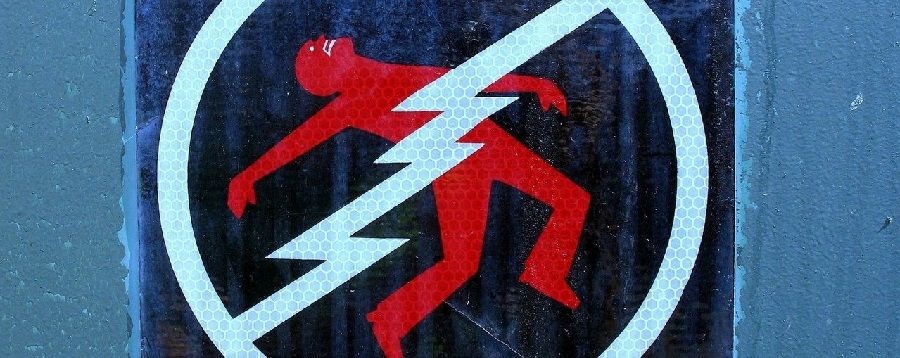
Electrical Safety: Arc Flash Awareness

Each year, 2,000 workers are admitted to burn centers for treatment of severe arc flash burns. While great advances are being made to improve equipment design and thereby reduce the number of arc flash incidences, awareness is still a key to improved safety.
What is an arc flash?
An arc flash is a sudden release of electrical energy through the air when a high-voltage gap exists and there is a breakdown between conductors. An arc flash gives off thermal radiation (heat) and bright, intense light that can cause burns and other injuries. Temperatures have been recorded as high as 35,000 degrees Fahrenheit. Exposure to these extreme temperatures burns the skin directly and instantly ignites clothing – Yow!
High-voltage arcs can also produce considerable pressure waves by rapidly heating the air and creating a blast. This pressure burst, or arc blast, can hit a worker with grenade-like force and send metal droplets from melted copper and aluminum electrical components shooting out at speeds up to 700 miles per hour — fast enough for the tiny shrapnel to penetrate a body.
What are the causes?
An arc flash can be spontaneous or can result from inadvertently bridging electrical contacts with a conducting object. Other causes may include dropped tools, the buildup of conductive dust, or corrosion.
Arc Flash Awareness video available from NIOSH
ESFI and the National Institute for Occupational Safety and Health Office of Mine Safety and Health are promoting a NIOSH video, Arc Flash Awareness and the companion booklet, Information and Discussion Topics for Electrical Workers. The 25-minute video shows arc flashes, causes and electrical safety regulations. It also provides important safety recommendations.
Arc Flash Resources:
Visit the Arc Flash Awareness page to see the video and other resources.
Visit the NIOSH Electrical Safety page.
Browse arc flash safety signs at ComplianceSigns.com.

